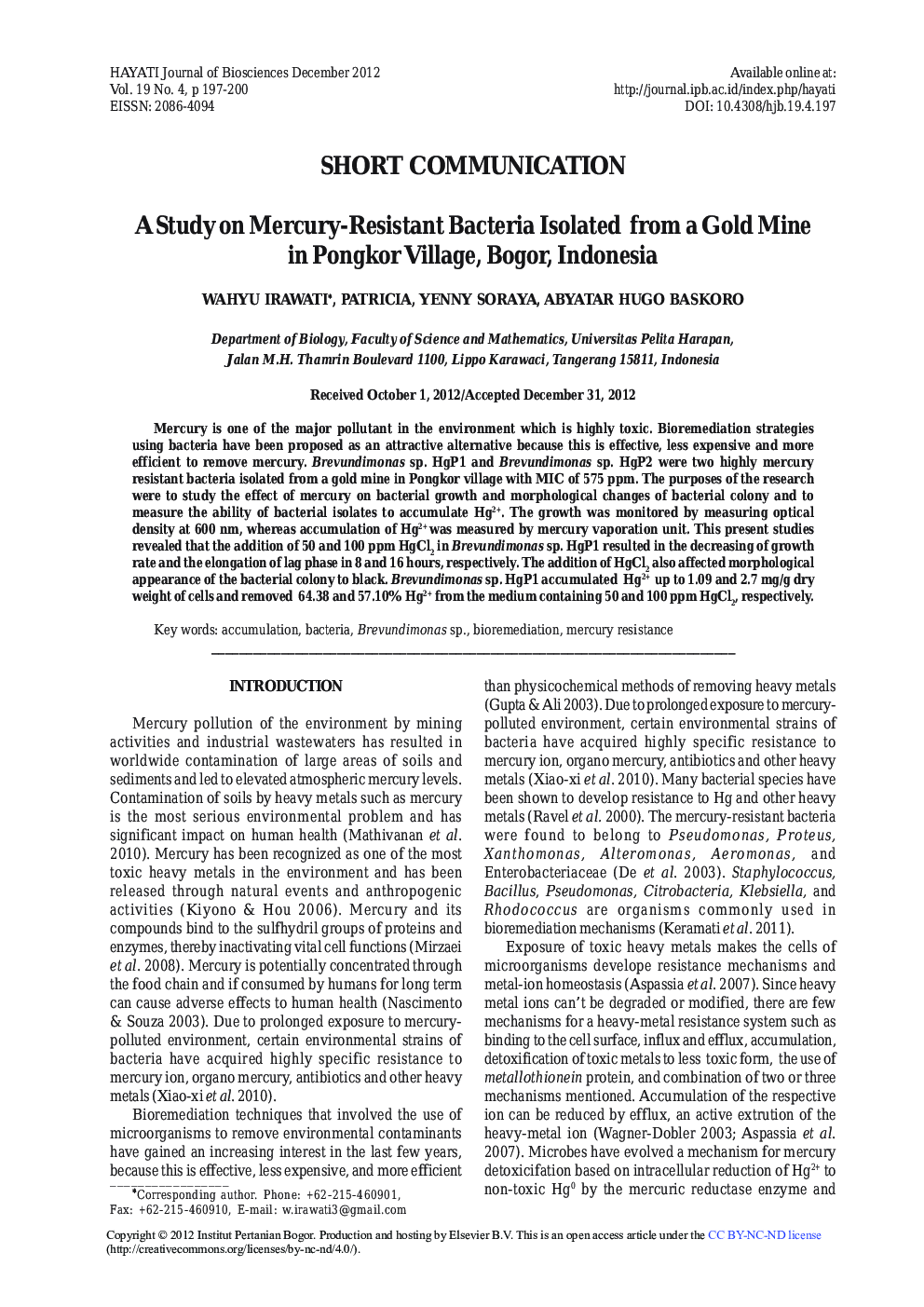| Article ID | Journal | Published Year | Pages | File Type |
|---|---|---|---|---|
| 2085965 | HAYATI Journal of Biosciences | 2012 | 4 Pages |
Mercury is one of the major pollutant in the environment which is highly toxic. Bioremediation strategies using bacteria have been proposed as an attractive alternative because this is effective, less expensive and more efficient to remove mercury. Brevundimonas sp. HgP1 and Brevundimonas sp. HgP2 were two highly mercury resistant bacteria isolated from a gold mine in Pongkor village with MIC of 575 ppm. The purposes of the research were to study the effect of mercury on bacterial growth and morphological changes of bacterial colony and to measure the ability of bacterial isolates to accumulate Hg2+. The growth was monitored by measuring optical density at 600 nm, whereas accumulation of Hg2+ was measured by mercury vaporation unit. This present studies revealed that the addition of 50 and 100 ppm HgCl2 in Brevundimonas sp. HgP1 resulted in the decreasing of growth rate and the elongation of lag phase in 8 and 16 hours, respectively. The addition of HgCl2 also affected morphological appearance of the bacterial colony to black. Brevundimonas sp. HgP1 accumulated Hg2+ up to 1.09 and 2.7 mg/g dry weight of cells and removed 64.38 and 57.10% Hg2+ from the medium containing 50 and 100 ppm HgCl2, respectively.
